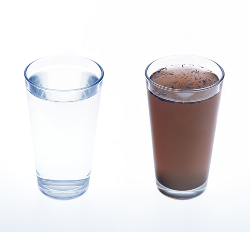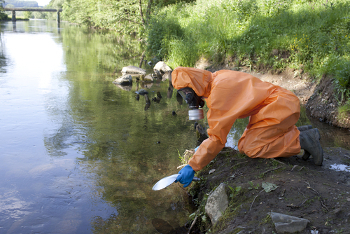THE Water it is actually a very important substance for the emergence and development of life on our planet. Unfortunately, over the centuries, human activities have been polluting this asset so precious to us.
Among the three main types of pollution (water, soil and air), pollution of waters is the most worrisome, given the vital need we have for water. To give you an idea, if a person goes only four days without drinking water, on average, he will die. It is also worrying because, in addition to the tailings that are thrown directly into lakes, seas, rivers, sheets Underground and oceans, pollutants released into the atmosphere and soil also end up in these water bodies. Furthermore, the amount of fresh water available for all human activities worldwide is small, because only about 0.3% of all the water existing on our planet is easily constituted as fresh water. usable.
It is important, then, to know what the sources of pollution of the waters to avoid them. There are several types of water pollution, the classification of which depends on the origins or causes as well as the consequences. The main types of water pollution are shown below:
Biological water pollution
It occurs when water bodies contain pathogenic microorganisms, such as bacteria, viruses, worms and protozoa, mainly from domestic and industrial sewage. They can be thrown directly into the water or they can infiltrate the soil, reaching well or spring waters.
The consequences of this type of pollution are the various diseases that can be transmitted to humans and animals, such as typhoid fever, cholera, salmonellosis, leptospirosis, hepatitis, schistosomiasis, amoebiasis and giardiasis.

Untreated industrial sewage being discharged into rivers
To combat this type of pollution, you can boil water or use chemicals such as sodium hypochlorite and quicklime.
Thermal Water Pollution
It occurs when large amounts of heated water that have been used are released into water resources, by example, in industries to heat boilers, in refinery, steel and mill refrigeration processes thermoelectric plants.
Other examples are the water used in Nuclear Power Plants. Have you ever noticed that they are always installed near lakes, rivers or seas? This is because, as explained in the text Nuclear reactor, the energy in these plants is produced because the nuclear fission reaction releases heat that makes the water boil, generating steam that drives the generator turbine and produces electricity. This vapor goes to condensers, where it returns to a liquid state. The hot water inside the cooling towers returns to the river, lake or sea.
Hot water decreases the solubility of oxygen gas in water, which causes the death of many fish and other aquatic animals. The increase in water temperature also speeds up reactions of other pollutants, if they are already present in the water, and affects the reproduction cycle of some species. This type of pollution has little effect on the potability of water.

Thermal pollution of water caused by nuclear power plants
Chemical Water Pollution
Occurs by harmful and undesirable chemicals, which is the most problematic of all pollution of the waters we are quoting, as its effects can be subtle and take a long time to perceived.
Among the main chemical pollutants are agricultural fertilizers. pollution and its consequences (such as the phenomenon of eutrophication) can be seen in more detail in the text Water pollution from agricultural tailings. Other pollutants are synthetic compounds such as plastics, herbicides, insecticides, paints, detergents, solvents, medicines and food additives. There are also oil spills due to accidents on ships carrying this fuel or even at the time of drilling and extraction, as the oil deposits are mostly at the bottom of the sea. In addition, the disposal of inorganic and mineral compounds, such as heavy metals, can cause poisoning, deformation and death.

The tumors that grew in a green turtle were caused by pesticides and pollution.
Sedimentary Water Pollution
It occurs when there is an accumulation of suspended particles, such as soil and insoluble inorganic and organic products. This is a result, for example.o, the accumulation of garbage and debris that have chemical and biological pollutants that prevent light from entering the water resources, which hinders photosynthesis carried out by algae and visualization of food by aquatic animals.
This type of pollution currently corresponds to the largest mass of pollutants and generates the largest amount of pollution.

Water polluted by sediment pollution
Radioactive Water Pollution
It occurs through radioactive waste released into the air and on the ground by nuclear experiments, atomic waste generated in nuclear power plants and hospitals.

Radioactive water pollution
By Jennifer Fogaça
Graduated in Chemistry
Source: Brazil School - https://brasilescola.uol.com.br/quimica/tipos-poluicao-das-aguas.htm
